The Concept
Modern robotics hardware for the hobby market has been reduced to a series of modules, from servos to processors. The only things connecting these together are wire and chassis, and I've been experimenting with using easy to obtain materials to build those chassis. Polycarbonate and polystyrene, polyethylene, sheet aluminium etc were natural choices.
Mark's IO made me think again about the validity of cardboard as a working material, and we began a dialogue that culminated in this collaboration.

The idea was to use a single sheet of craft card and a printed template to create chassis units that connect the electromechanical building blocks together.
We have since iterated over a few changes to the design, incorporating better geometry to give the parts strength, room for cabling and better overall appearance.
First generation limb built by Mark N during the initial prototyping.
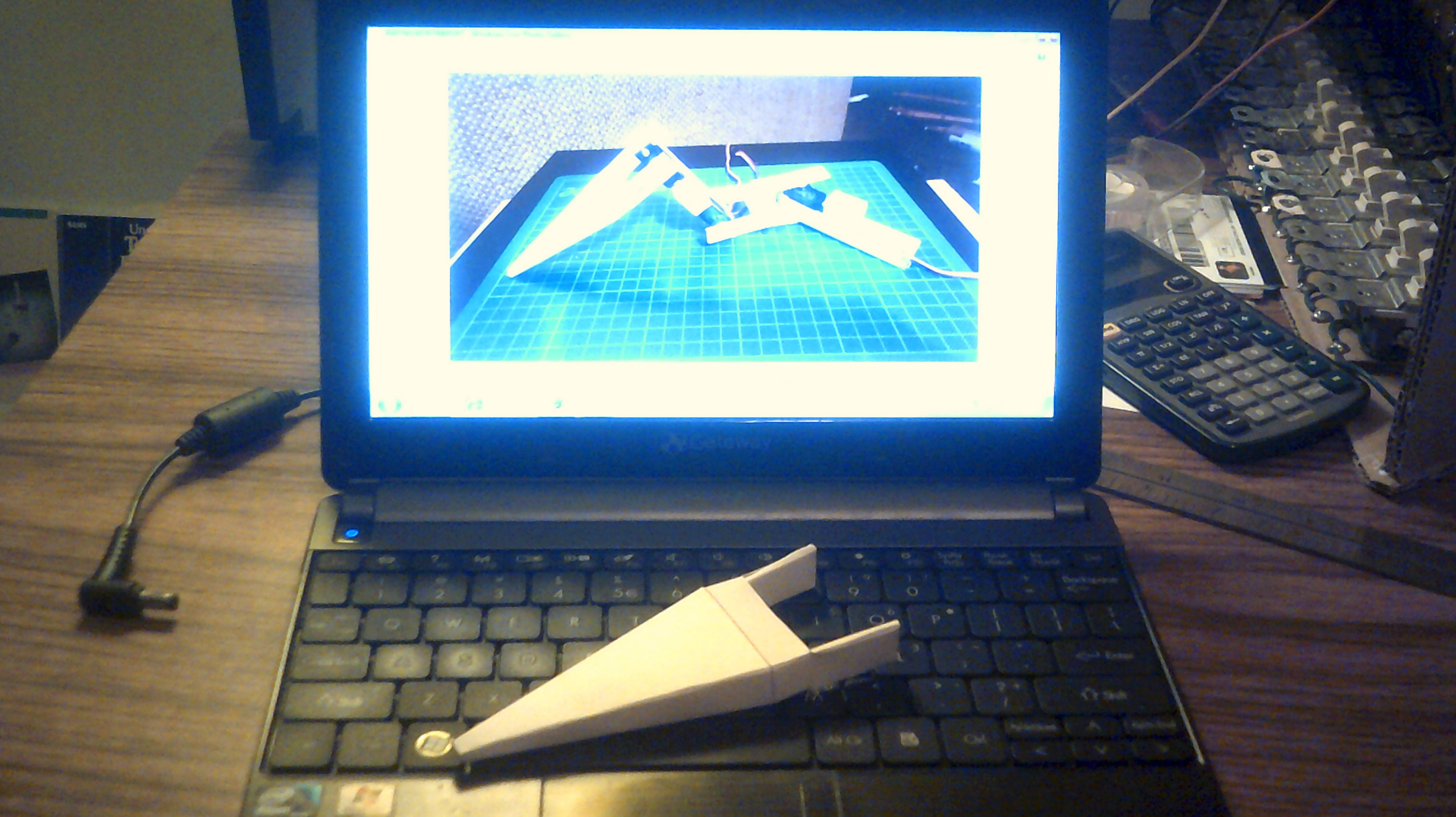
Origaime - The next generation
The updated parts built in exactly the same way as the first set, they fold up
from a single piece of cardboard to make a modular piece for the robot.
Mark calls this Origaime, after the original robot that inspired
everything and the art of folding. :-)
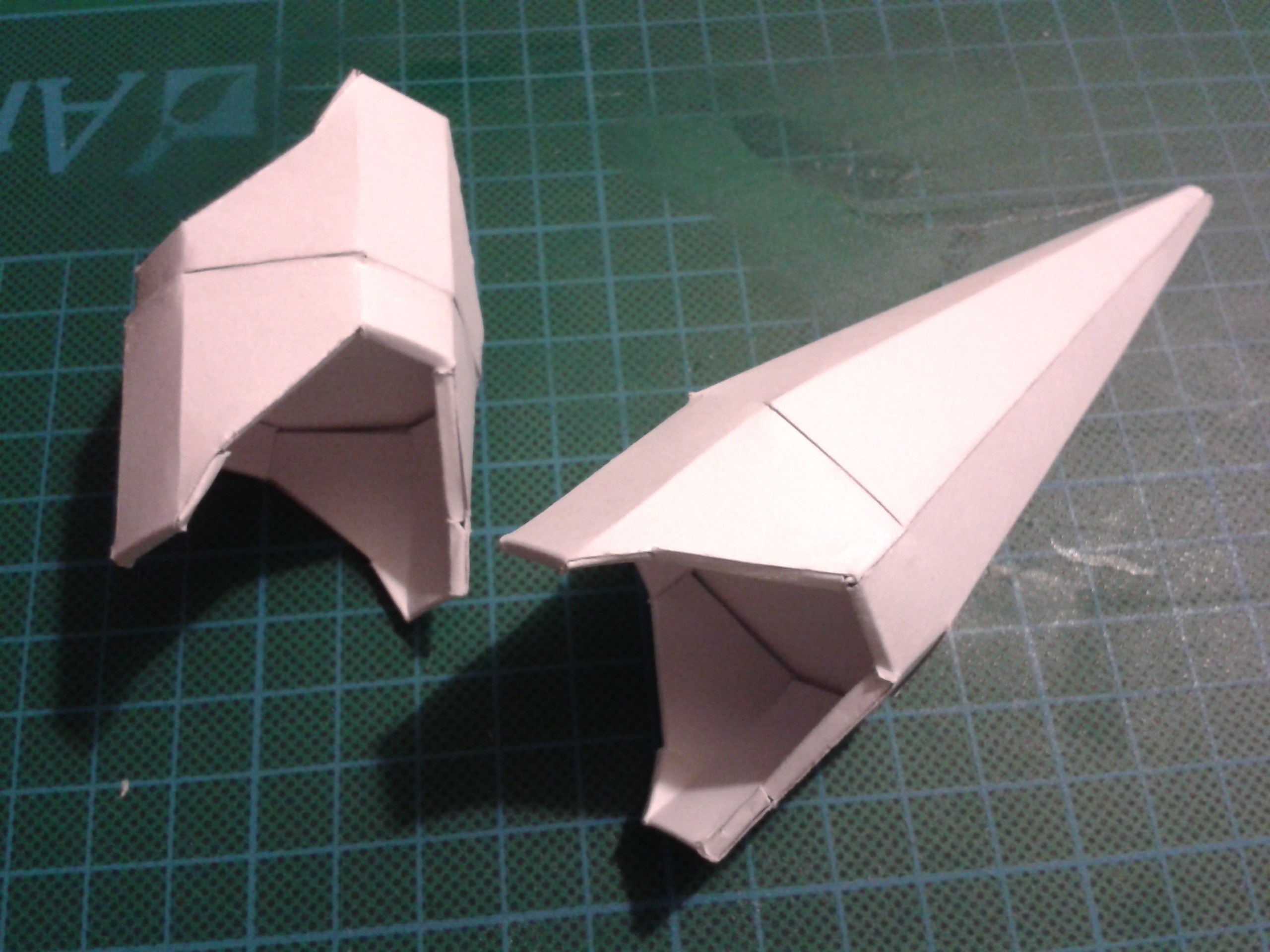
Other MaterialsWe've
looked at other materials besides cardboard after realising that
self-recycled materials were also a possibility. The initial discussions
for the project touched on the fact that paper and card were already a
recycled material besides their other qualities, but the inclusion of @markgeo
to our collaborators brought this to the front quite literally as he
attempted a build of the early generation limb parts using cardboard
scavenged from cereal packets. This was necessary as he is developing
Cardware in Thailand where card stock and other things we take for
granted are not so easy to obtain. MarkG is using this ability of the
system to promote robotics in education there, as other resources needed
to teach the subject are not easily available.
Other ways of using the materials available
Exoskeletons are one way of using planar geometry to build 3 dimensional shapes. Planes can also be applied equally to laminar technology to make solid forms.
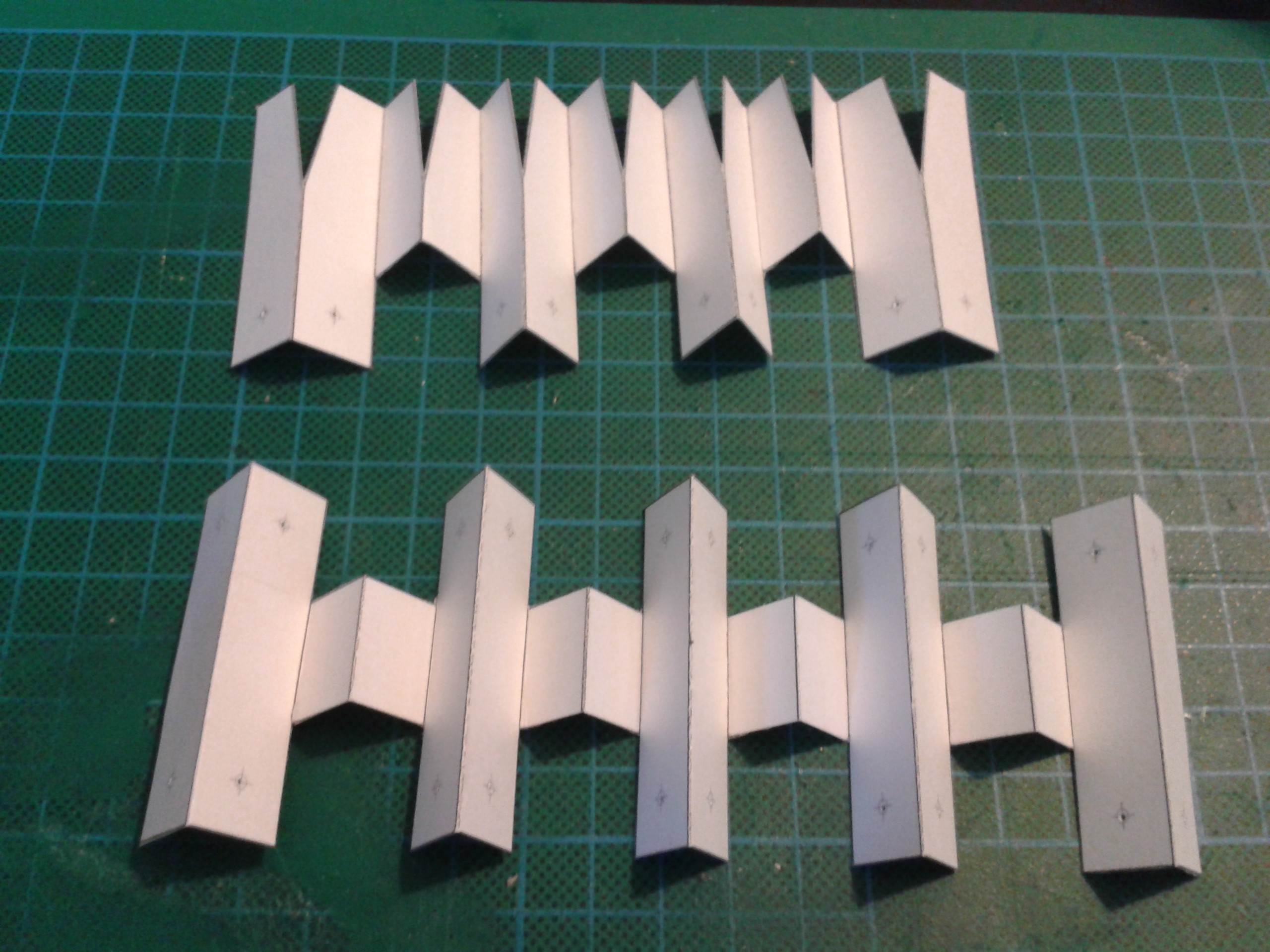
Once the cardboard has soaked up a generous amount of PVA glue it becomes a composite more in keeping with building technologies like MDF. Laminar technologies are also extremely strong and accurate, using averaging to spread loads and imperfections in their design to achieve military precision.
Origarmy
Extending a finger in the direction of solid forms. Repeated accuracy has always been a problem with hand built machinery. Those days are gone with laminates.
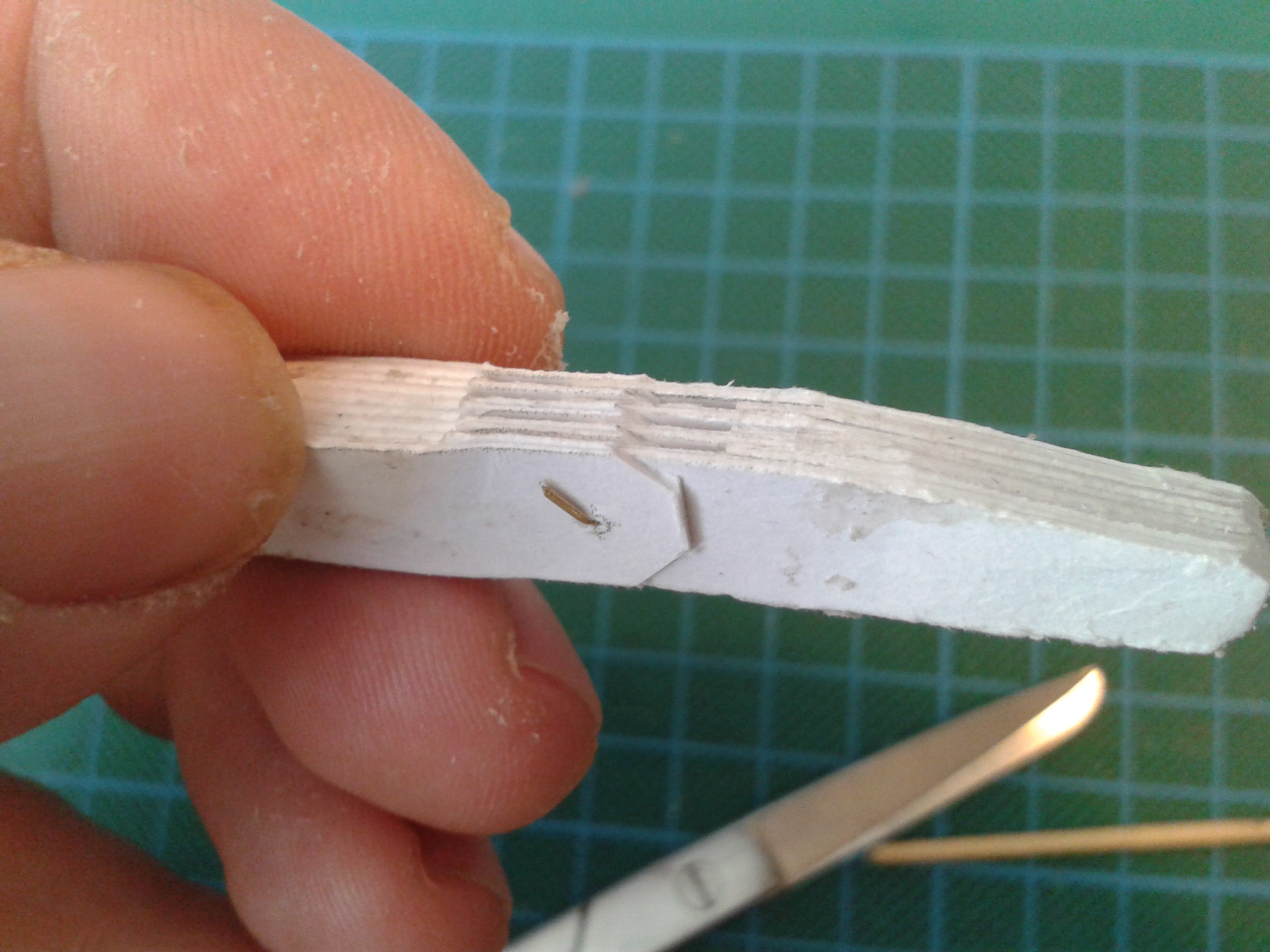
Not just fingers either, the AIME hand mechanism was deliberately scalable even though it never really saw the light of day. Inspired by Mark's #Uglytech - The cardboard relay I went back to the drawing board for the limb parts and thought about hybridisation.
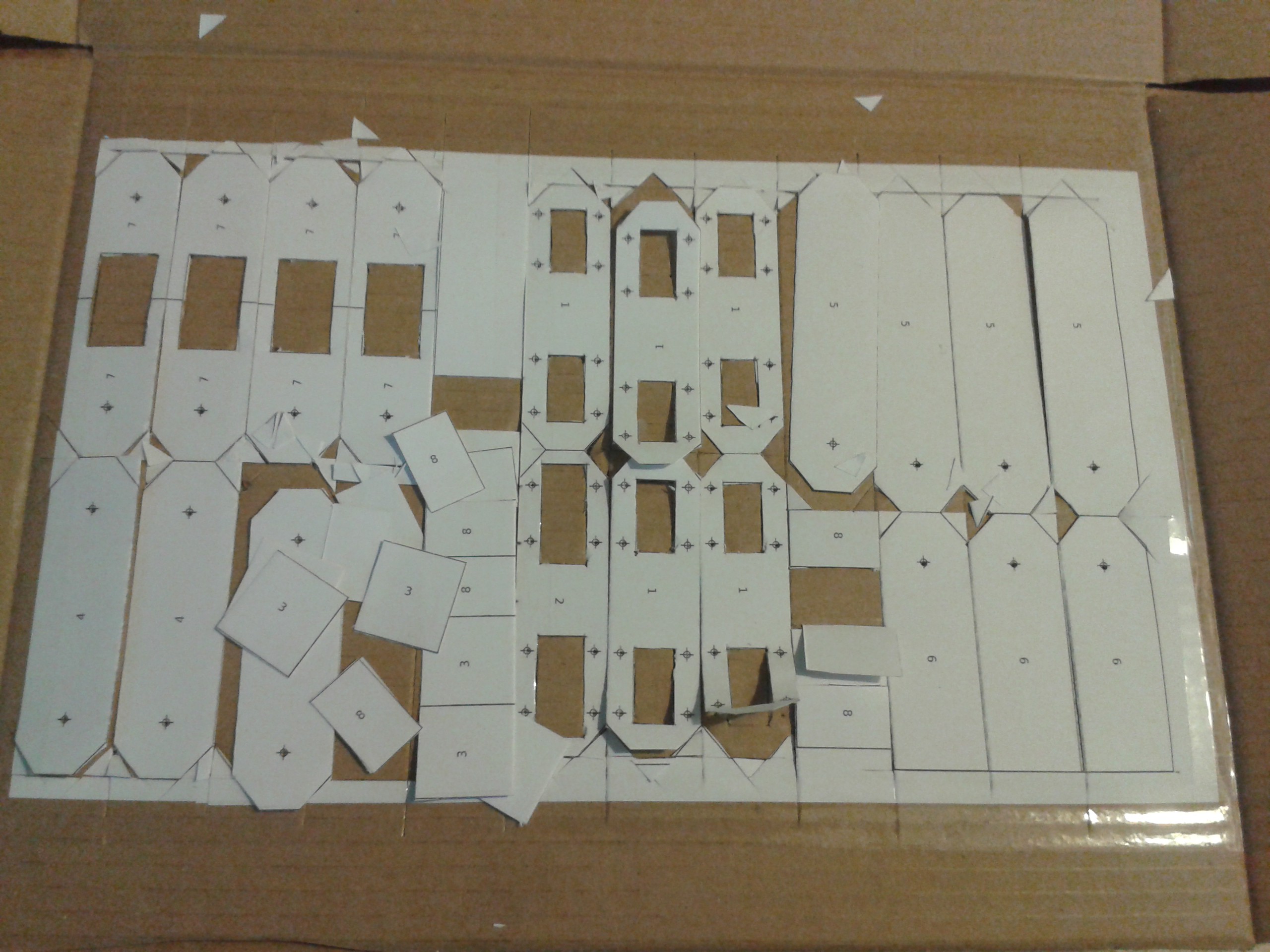
Still a printed template but uses much crappier materials. MarkGeo highlighted that good cardstock is not always available and Cardware Exoshells require a narrow window of weights to work properly due to the card being too thick and stiff for the small tabs, and problems like de-lamination crop up as well.
I looked at how Mark Nesselhaus was stacking the material and realised that garbage corrugated card was actually fine, just real ugly and required special considerations.
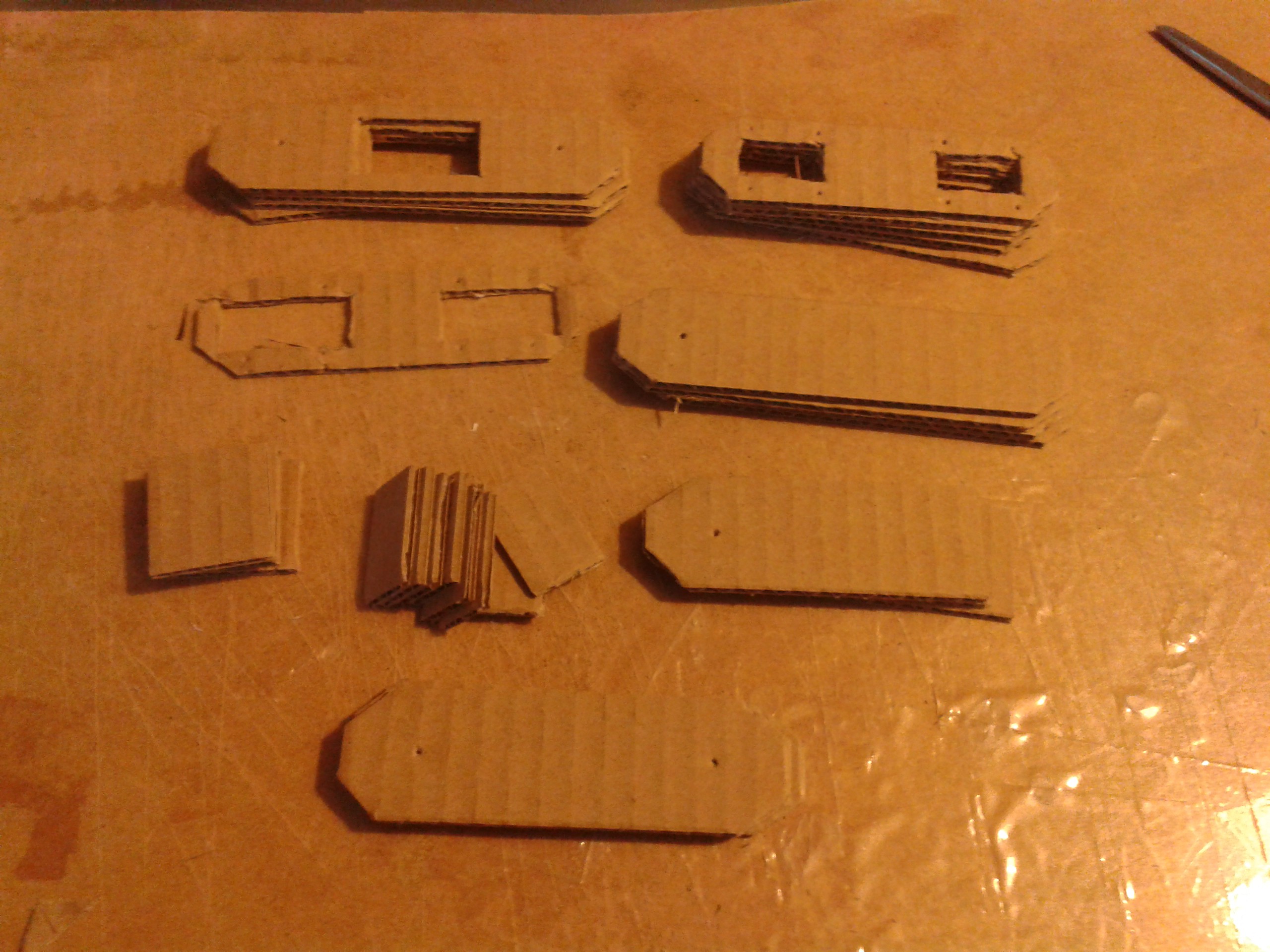
It cuts out cleanly and quickly with a craft knife. You can be lazy about this, providing the holes for the bearing pins are punched accurately, you could hack the rest out with a butter knife and it would still work. This is a deliberate response to the immediate reaction to Cardware - because it looks pretty, it must take monumental skills to build - which is in error. Yes, there is technique, I have built it into the paradigm so it teaches you as you go. Providing you dont jump in with the hardest part of all - Hip Yokes.
These are still a pain to construct, but are easier laminated.
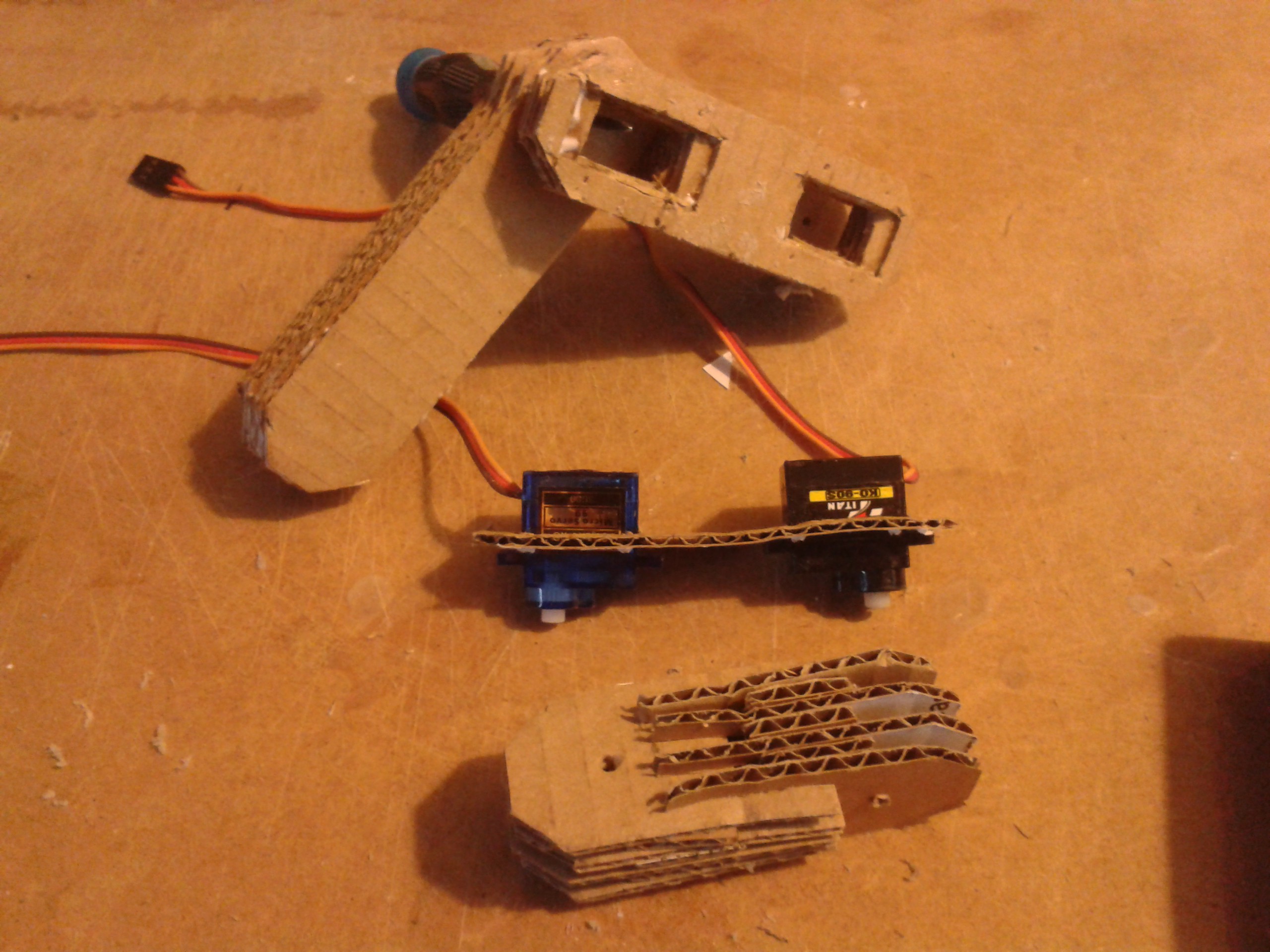
The Sensor Array
I've also looked at the sensor system across the range. The system has gone through some iterations as well, and I think that this is the simplest of all.
Foil patches and wire are attached to a sticky-back plastic former and applied to the surfaces of Cardware as a wrap, integrating both the sensor and wiring into an application layer.
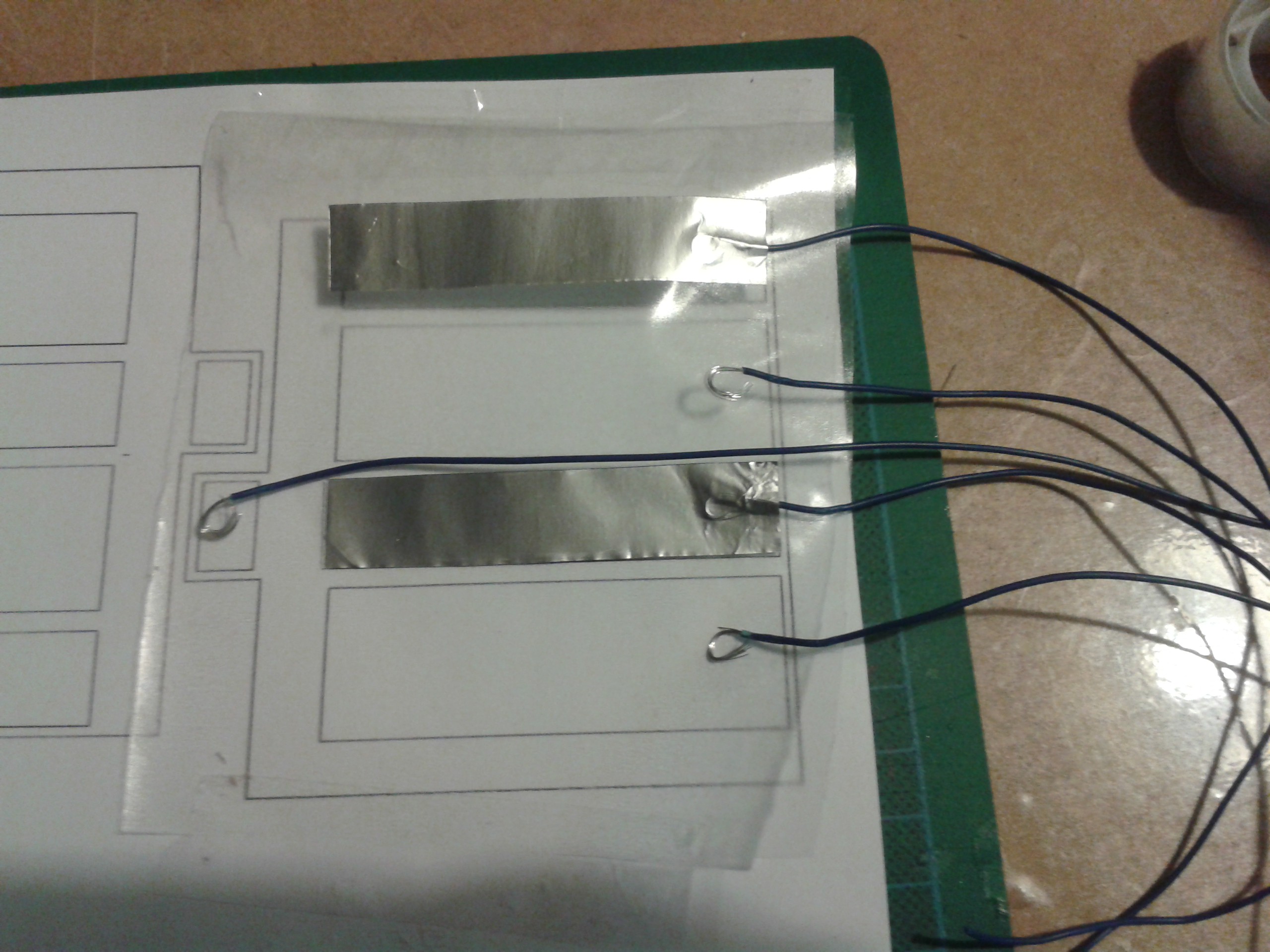
This is a lot easier to handle than ribbon cables, and attaching the sensors to the shell individually. It also secures the wiring harness better. I've used foil tape and removed the paper so the whole surface is adhesive and can be just applied like a sticker.
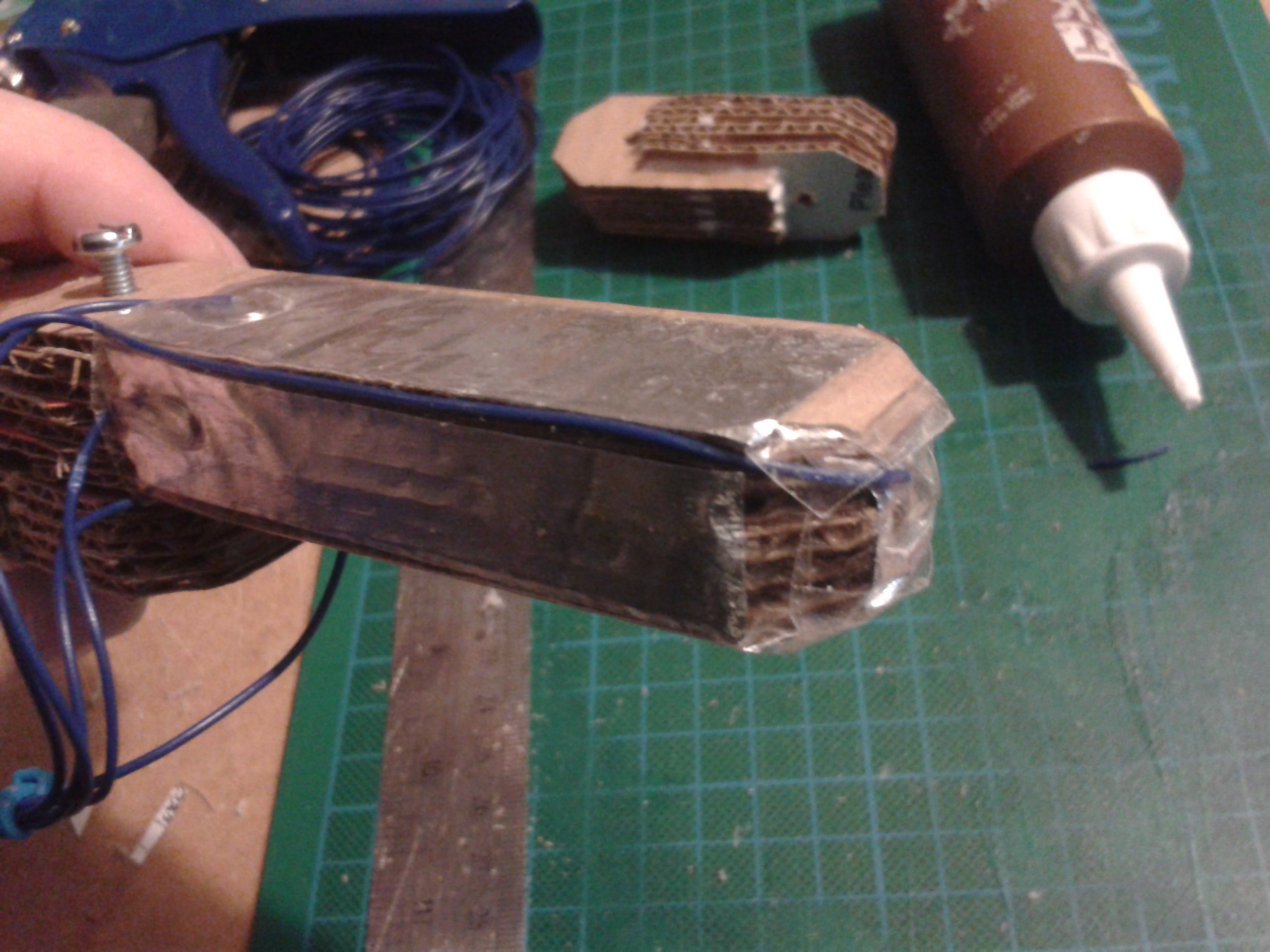
MMM, reminds me of those chocolate wafer biscuits when I was a child. This may be a little chewy if equal in nutrition.
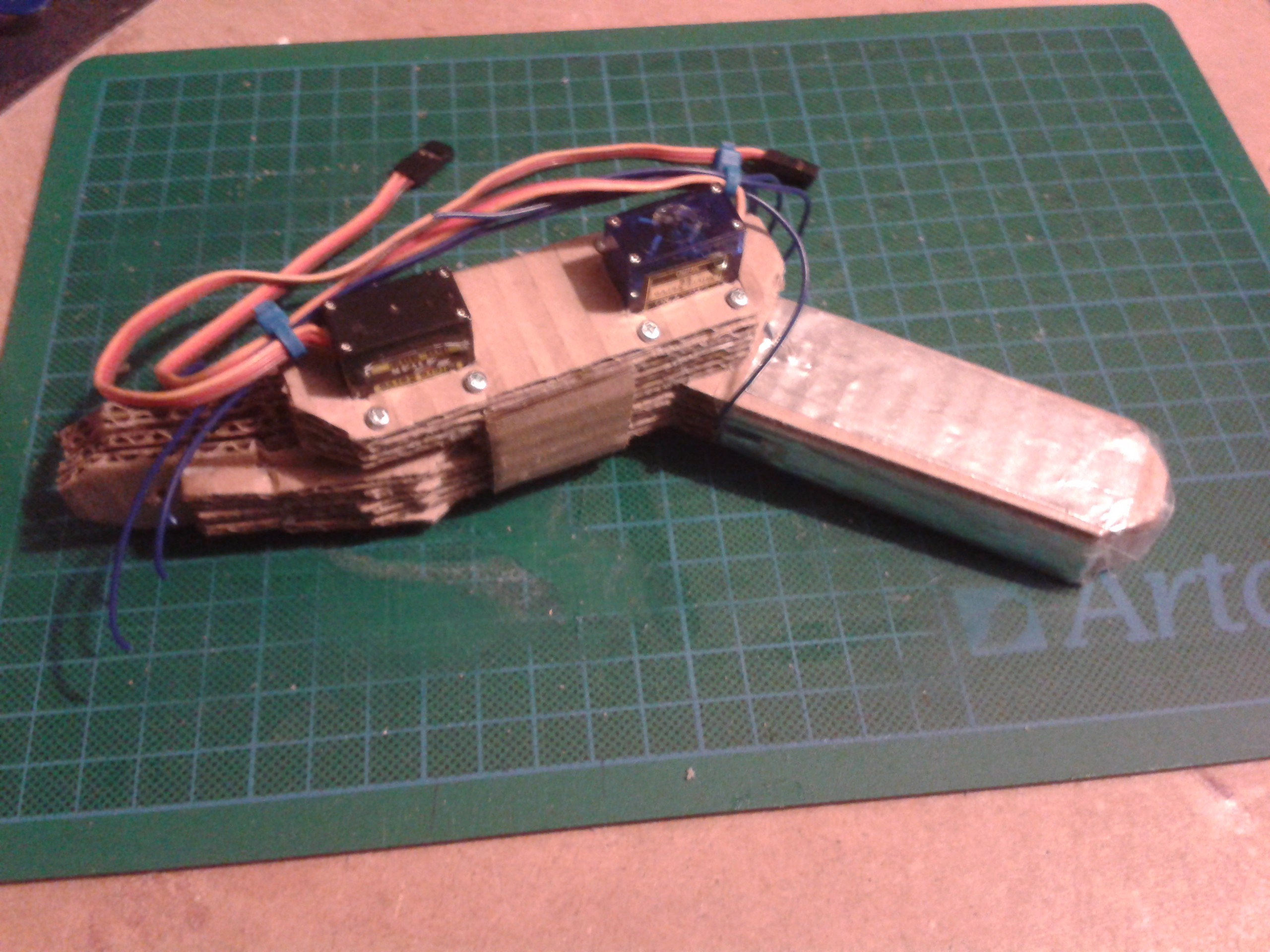
Set Phasers to Stunning
The lid contains the servos and just screws into place so the part can be repaired. It doesnt look as tidy as it's exoshell cousin, but it is strong and sturdy , accurate, and weighs very little for it's bulk.
Because of the lack of servos until the $kulls come through I've decided to venture out a little from the types of limbs I have been looking at, realising I'd completely ignored wheels and tracks.
Doing the locomotion
Corrugated cardboard very quickly gets tired and floppy with heavy use. Harsh folds tear and eventually it falls apart. However it will take quite tight curves and is very flexible along the grain but not across it. I figured it would make a good track if I could join it into a continuous loop.
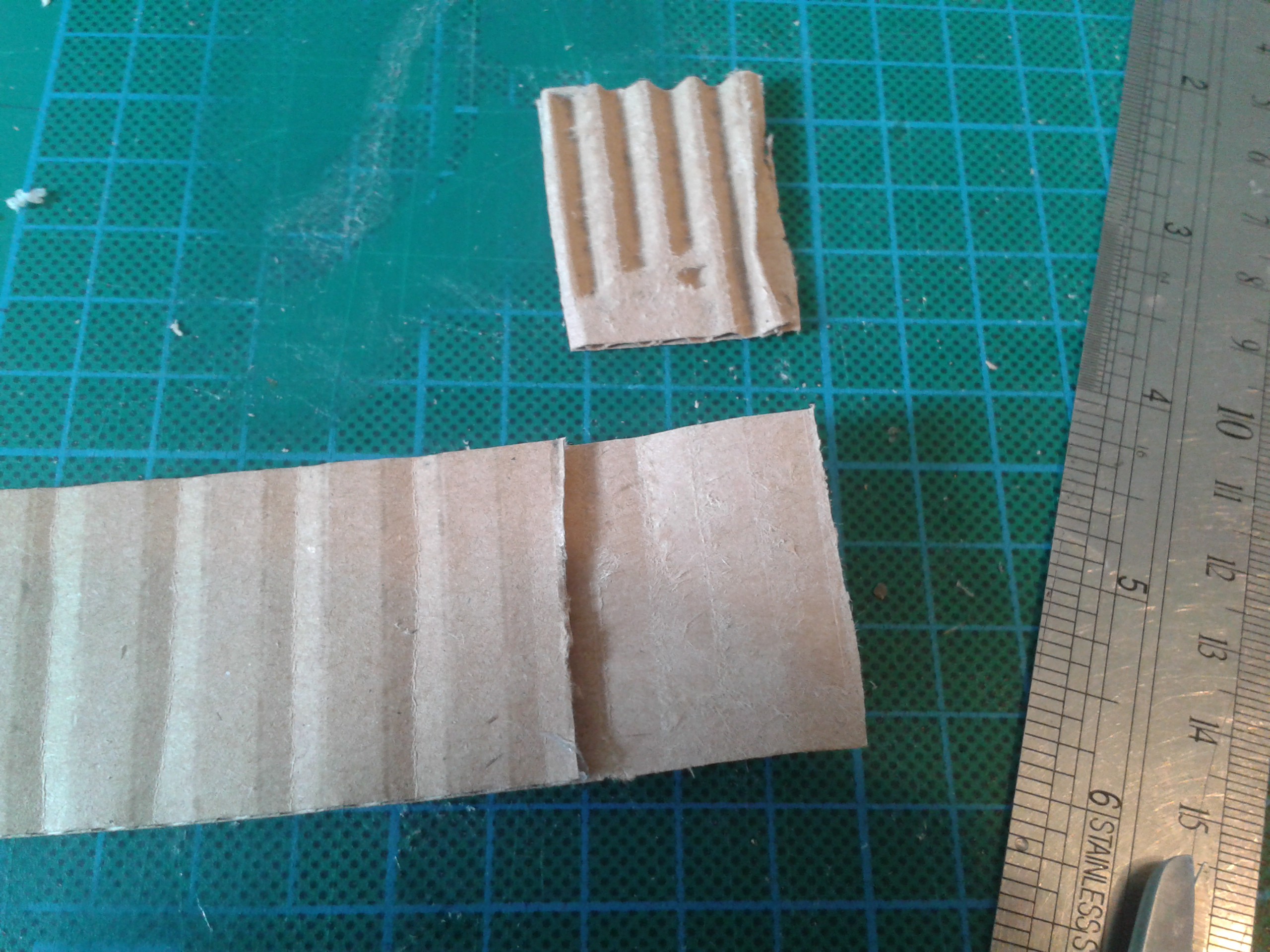
This turned out to be simple. Just cut through one layer and strip out the corrugation, after allowing the extra length for the belt, and lap the ends together.
Perfect. Now for the drive 'cogs'.
Two circles of card cut to size to make a former and end plate, another strip of lapped and pre-formed card to make a hub...

Plenty of glue...
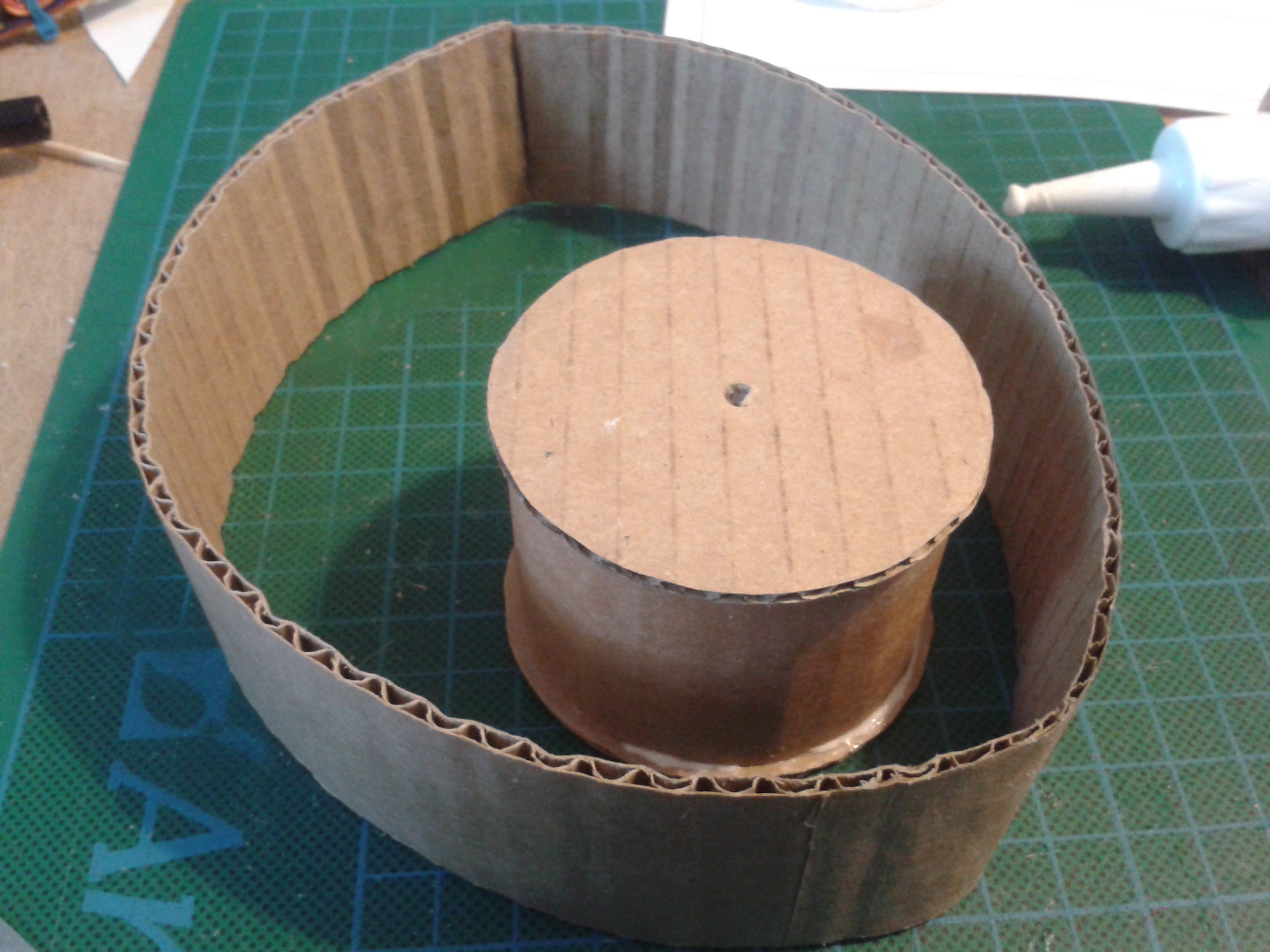
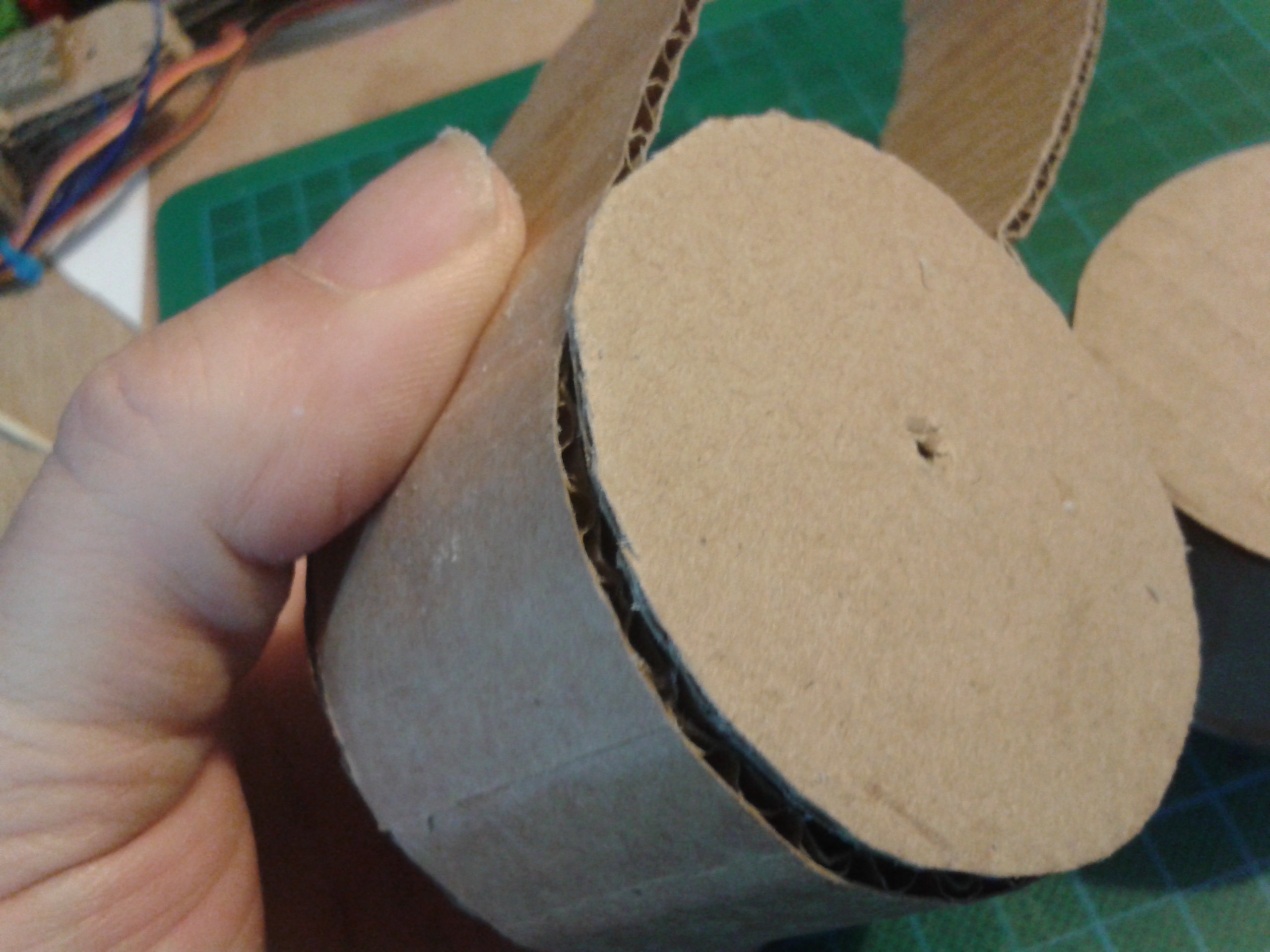
Treads would be good, rectangles cut and glued to the belt should do the trick...
Still other ways of using Origaime...
The exoshells dont have to be used directly to make mechanisms. They can also lend their form to other materials to make repeatably accurate mouldings:
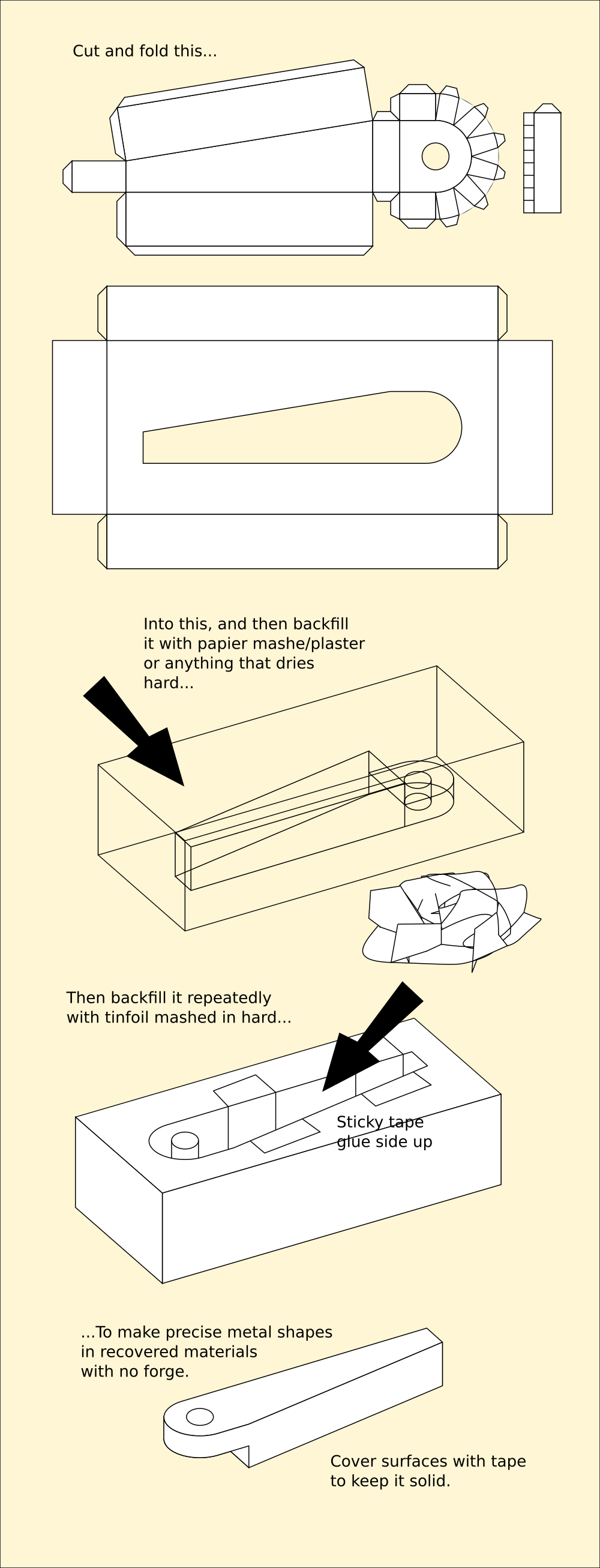
I've chosen foil as the end material for construction because it is light (50% density or better) and strong when compressed to higher densities.
Larger, and hollow structures can be made by gluing accurate sub-parts together, and precise bearings can be formed by inserting plastic rods into the mould during construction. The parts form around them so they can be integrated exactly the same as in the hot-forging metal process that inspired this.
Other filling materials from clay and ceramic composites through papier mashe to poured resins can be used to create numerous accurate parts for all sorts of things besides robot parts.
A nod to the origins
I've also been doing research into Kusudama, a branch of Origami that deals with modular and glued folded-paper constructions. I have long had a love for Origami and made many complex models but never encountered gluing, it's a divergence from the pure form. This is a part of a model from a book that inspired me many years ago, but never thought beyond the paper.

The model contains a number of opposed-plane hinges that really only need a control system, and can be made of much thicker card or even Polyethylene sheet.
The Nervous System
The nervous system in action on a first gen limb, attached to my PC. I'd managed to get it working how it was intended - it mimics the biological hallmark of withdrawing from a stimulus, and learning from the experience.
If you watch carefully, you can see that the servos are live and are holding the limb in position until I touch a surface, which it then withdraws from by a short distance. The system will record these motions and tag them to a hierarchical structure so you can 'program' the robot by touch alone. This only requires an MCU, but we are also using a RasPi with a camera and microphone to detect motion and shapes and respond to voice commands.
Testing the system on a Pi revealed the touch panels to be a lot more sensitive, and the cardboard literally came alive. I'm working on a way to integrate both these behaviours into the system.
ICU Origaime
Origaime can also see with its Integrated Camera Unit. This is a replacement shell print containing the parts needed to include stereoscopic vision.
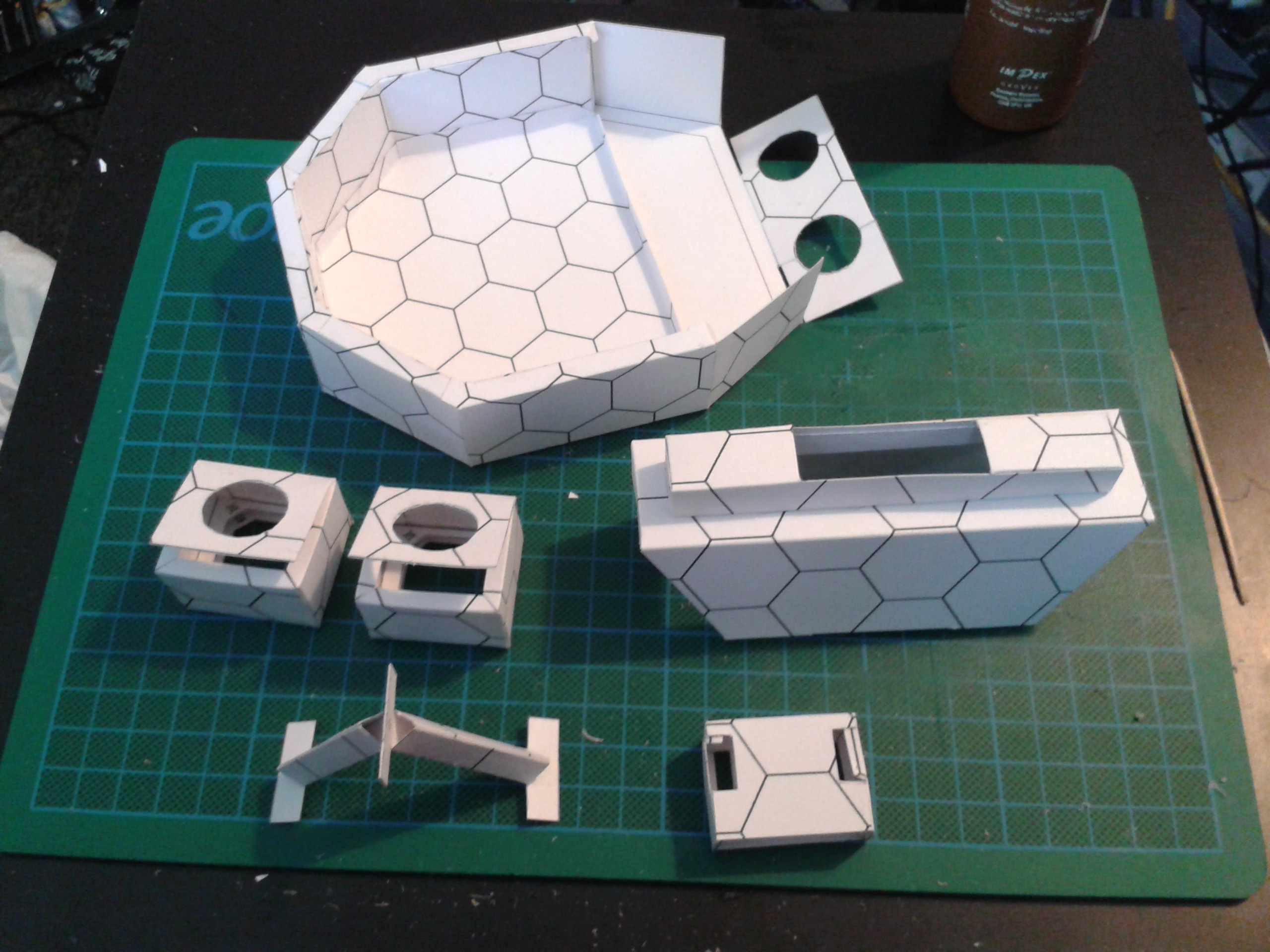
Origaime is based on AIMOS, which was designed from the outset to drive a flexible architecture. This uses only two servos, one for the cameras and one for the neck but can be easily adapted with a hip module to realise a talking head. I'm not big on anthropomorphisation, but it wont take much to adapt the system for almost any architecture.
This is just an ICU base, without hip units, mounted on a servo so I can work on the 3d motion capture code.

ALL YOUR BASE ARE BELONG TO US NOW :-)
Mark One also suggested joining thigh modules together with hip modules, a lower leg on one end and a new head unit on the other to experiment with snake/caterpillar type motion.
MarkGeo also inspired some other morphologies while waiting for his servos to arrive.
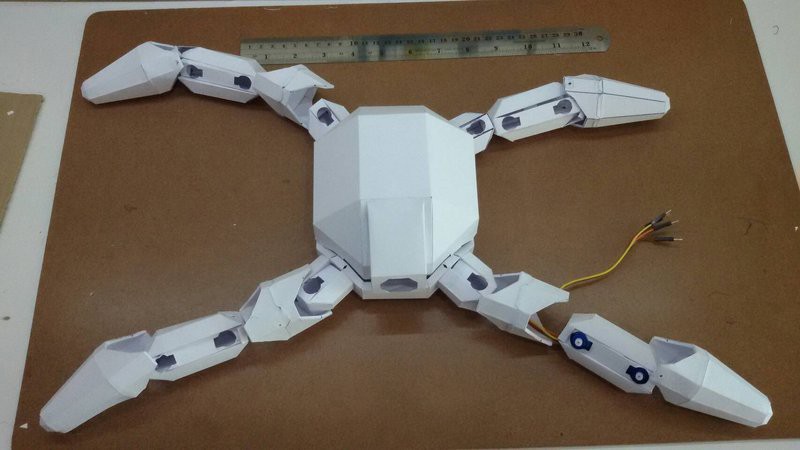

 Morning.Star
Morning.Star